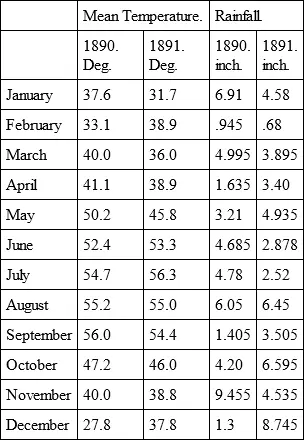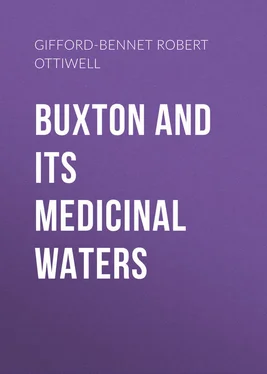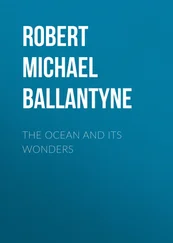Robert Gifford-Bennet - Buxton and its Medicinal Waters
Здесь есть возможность читать онлайн «Robert Gifford-Bennet - Buxton and its Medicinal Waters» — ознакомительный отрывок электронной книги совершенно бесплатно, а после прочтения отрывка купить полную версию. В некоторых случаях можно слушать аудио, скачать через торрент в формате fb2 и присутствует краткое содержание. Жанр: foreign_antique, foreign_prose, на английском языке. Описание произведения, (предисловие) а так же отзывы посетителей доступны на портале библиотеки ЛибКат.
- Название:Buxton and its Medicinal Waters
- Автор:
- Жанр:
- Год:неизвестен
- ISBN:нет данных
- Рейтинг книги:4 / 5. Голосов: 1
-
Избранное:Добавить в избранное
- Отзывы:
-
Ваша оценка:
- 80
- 1
- 2
- 3
- 4
- 5
Buxton and its Medicinal Waters: краткое содержание, описание и аннотация
Предлагаем к чтению аннотацию, описание, краткое содержание или предисловие (зависит от того, что написал сам автор книги «Buxton and its Medicinal Waters»). Если вы не нашли необходимую информацию о книге — напишите в комментариях, мы постараемся отыскать её.
Buxton and its Medicinal Waters — читать онлайн ознакомительный отрывок
Ниже представлен текст книги, разбитый по страницам. Система сохранения места последней прочитанной страницы, позволяет с удобством читать онлайн бесплатно книгу «Buxton and its Medicinal Waters», без необходимости каждый раз заново искать на чём Вы остановились. Поставьте закладку, и сможете в любой момент перейти на страницу, на которой закончили чтение.
Интервал:
Закладка:
Robert Ottiwell Gifford-Bennet
Buxton and its Medicinal Waters
PREFACE
Knowing from long experience the powerful action exerted upon the human system by the Buxton Medicinal Thermal Water, and the unsatisfactory results arising from its indiscriminate and incautious use, either in the form of baths or by taking it internally, I have in the following pages, as briefly and succinctly as possible, endeavoured to make some practical suggestions for the guidance of those of my professional brethren who have had no opportunity of becoming personally acquainted with the Buxton Spa, with the hope that they may prove of service.
R. O. G. B.Tankerville House,
Buxton, May, 1892.
CHAPTER I.
TOPOGRAPHICAL AND DESCRIPTIVE
Situation – Altitude – Geology – Roman Baths – Climate and Temperature – Death Rate – Water-Supply – Rainfall – Drainage – Railway Communication – Public Buildings – Devonshire Hospital and Buxton Bath Charity – Visitors’ Accommodation – Antiquarian.
The ancient town of Buxton, which is situated upon the extreme western boundary of the county of Derby, at an elevation of 1,000ft. above the sea level, lies in a deep basin, having a subsoil of limestone and millstone grit, and is environed on every side by some of the most romantic and picturesque scenery in the High Peak, hill rising above hill in wild confusion, some attaining an altitude of from 1,900ft. to 2,000ft.
Buxton, or, as originally called, Bawkestanes, was occupied as a military station by the Romans, who, during their occupancy, constructed baths over the tepid water springs which issue through fissures in the limestone rock, where it comes in contact with the millstone grit, as was proved beyond doubt by the finding of Roman tiles (used in the construction of their baths) some years ago, when the present baths were under repair.
Although Buxton is situated at so great an altitude, the mean temperature for years past (owing, no doubt, in a great measure, to the taste displayed and forethought shown by the late Mr. Heacock, agent for many years to his Grace the Duke of Devonshire, in causing the surrounding hills to be well planted) has averaged about 44° Fahr., only a few degrees below that of some of the most frequented winter resorts in Great Britain. Such a temperature, however, may appear to some to militate against Buxton as a health resort except during the summer months, but it must be borne in mind that although the temperature may be said to be somewhat low (a necessity of its altitude), yet the atmosphere is especially pure and dry, and, like that of Davos Platz, plays no inconsiderable part in conducing to the highly-sanitary condition of the neighbourhood.
The healthiness of the Buxton district is borne out by the fact that the death-rate from zymotic disease is lower than that of most other localities in Great Britain, and that the average annual death-rate from all forms of disease is only (among the resident population) 10 in 1,000.
The air being so pure and dry exerts a most bracing and tonic effect, especially in cases where the system has become debilitated from any cause – anæmia, chlorosis, chronic liver and splenic disease, many forms of bronchial asthma, the first stage of tuberculosis of the lungs, and tubercular degeneration of the mesenteric glands in childhood, I have seen much benefitted by a short residence in the district. To the closely-confined and overworked residents in towns the crispness and buoyancy of the atmosphere impart a feeling of lightness and exhilaration rarely experienced except in a highland district, making mental and physical labour less irksome and life more enjoyable.
The water supply of Buxton is abundant, soft, and free from impurities, doubtless owing to its percolating through the great filter bed of sandstone to the north of the town, and issues in numerous springs far above any source of contamination from the inhabitants in the valley below.
It has been stated (and I think much to the prejudice of Buxton) that the rainfall of the High Peak, and especially of the Buxton district, is generally in excess of that of most of the other parts of Great Britain. Such an assertion is quite incorrect, as may be ascertained by a careful examination of the rainfall of other localities; although, as in all hilly districts, we must, on account of the attraction of the hills, expect a somewhat larger rainfall than on the plains. The annual average fall in the neighbourhood of Buxton amounts to about forty-nine inches, which is much less than that of many localities both in the Northern and Midland Counties. Even when there is an exceptionally heavy fall of rain the porous nature of the subsoil precludes the possibility of an accumulation of surface water to any great extent.
The following table shows the mean temperature and rainfall for 1890 and 1891, two years in which we have experienced a lower temperature and a greater rainfall than for some years past, which, I believe, has been the experience of most other parts of Britain during the same period: —

Mean temperature for 1890 = 44°.6; mean temperature for 1891 = 44°.4.
Rainfall for 1890 = 49.77in.; rainfall for 1891 = 52.718in.
Buxton being built in a valley inclining to the east, and upon the slopes of the adjoining hills to the south, west, and north, necessitates the convergence of its system of drainage into a main sewer, which is carried through the heart of the town to its outskirts, where the contents are discharged into tanks, and purified by a chemical process submitted to the town authorities by Dr. Thresh.
The natural incline upon which the town is built greatly facilitated the sewerage arrangements so ably planned and successfully carried out by the late Sir Robert Rawlinson.
Two lines of railway, the London and North-Western and Midland, whose stations are situated adjoining each other to the east end of the town, and between Buxton and Fairfield, afford every facility of communication with all parts of Great Britain and Ireland. The station of the East to West Railway now in process of formation will be in Higher Buxton, and will doubtless prove of much convenience to residents in that neighbourhood.
Visitors to Buxton, of all classes, will find ample and suitable accommodation in the numerous hotels, hydros, boarding-houses, and private apartments.
The Buxton Gardens’ Company’s Pavilion, Music Hall, and Theatre (where during the season the first artistes are engaged), lawn tennis, skating rink, golf, cricket, and football clubs, fishing, shooting, and hunting, provide varied amusements for all tastes.
Mail coaches and charabancs run daily (Sundays excepted) to either Bakewell, Haddon, Chatsworth, Matlock, Castleton, or Dove Dale, during the season. Private conveyances, riding and driving horses, are procurable by those wishing to visit the numerous places of interest in the neighbourhood or ride to hounds.
Buxton possesses some very handsome public and private buildings. The Crescent, perhaps one of the finest structures of its kind in Europe, has a frontage of 400ft. and a height of nearly 70ft., and is massive and bold in design. Above it is surmounted by an open battlement, which runs the whole of its length. In its centre the Devonshire coat of arms stands out in bold relief. Along the base of the building a wide open colonnade extends from one end to the other, and is a great convenience in going to and from the Baths and drinking fountain in wet weather, or as a promenade. It was originally intended for one hotel, but is now divided into two. In front is an open semicircular space, extending to the foot of St. Ann’s Cliff, an extensive piece of ground, tastefully laid out in terraces and public walks, some of which lead from terrace to terrace to the public drinking fountain at the base of the slope, and others to the plateau above, upon which stands the Town Hall, a handsome and substantially-built structure, recently erected, containing public and private offices, magisterial and assembly rooms, museum, free library, reading-room, &c.
Читать дальшеИнтервал:
Закладка:
Похожие книги на «Buxton and its Medicinal Waters»
Представляем Вашему вниманию похожие книги на «Buxton and its Medicinal Waters» списком для выбора. Мы отобрали схожую по названию и смыслу литературу в надежде предоставить читателям больше вариантов отыскать новые, интересные, ещё непрочитанные произведения.
Обсуждение, отзывы о книге «Buxton and its Medicinal Waters» и просто собственные мнения читателей. Оставьте ваши комментарии, напишите, что Вы думаете о произведении, его смысле или главных героях. Укажите что конкретно понравилось, а что нет, и почему Вы так считаете.












